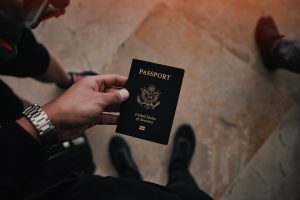Cultural exchange visas provide an opportunity for foreigners to live in the US temporarily. There are two main types of cultural exchange visa: the Q visa, which is intended to allow the visa holder to share his or her culture and traditions with US citizens, and the J visa, which is a visa that allows visa holders, usually students, to participate in work-study programs in the US.
Both of these visas are temporary. The immigrant’s spouse and unmarried children under the age of 21 may also come to the US. To be granted a visa, you first must apply to and get accepted into an established exchange program. After your acceptance, your sponsor sends you a certificate, which allows you to apply for a visa at the US Consulate in the country where you reside.
An important qualification for the Q visa is that your job has to include the sharing of your culture and traditions. The Q program only permits you to stay in the US for 15 months, and you have to spend at least a year outside the US before you can participate in another Q program. The duration of J programs is more flexible, and it’s often used by students studying in the US. In some circumstances you must spend two years outside the US when your visa program ends before being eligible to return to the U.S. with an H-1B (professional work) visa or as a permanent resident (“green card”). So if you are intending to come to the US on J-1 visa, it is wise to become familiar with the rules and restrictions for this particular visa category.
If you are working in the US with a Q visa, your employer must pay you a wage that is appropriate for the type of work you’re doing. If you are working in the US with a J visa, your sponsor is not required to pay you a prevailing wage, or any wage at all. If you are accepted into a program that doesn’t pay a wage, you must be able to demonstrate that you have enough money to cover your living expenses while living in the US.
These visas have not been without controversy. Three years ago, students from around the world, including Romania, China, Nigeria, and the Ukraine, came to the US on a J-1 summer visa program that was supposed to arrange for them to work for two months and then spend the rest of the summer traveling. They were not expecting to be put to work in an assembly line packing candy, often on the night shift, and to be paid just a little over minimum wage. Students claimed they were making so little that they would not earn enough to reimburse them for what they paid for their visas. The students won $200,000 in back wages after they brought a lawsuit.
If you have questions about this opportunity or any other form of immigration, we would be glad to assist. Give us a call today!







